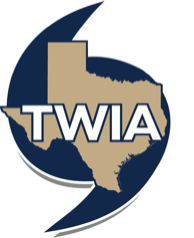TWIA provides a variety of options for payment plans and accepts several forms of payments. For questions about payment options, please contact your agent or reach out to us at payments@twia.org or (800) 788-8247.
Assistance
This guide shows how to make a payment in the Policyholder Portal.
Payment Methods
TWIA accepts the following payment methods:
| Payment Method | Fees | Payment Plans Available | Online Portal Log In Required |
| Through Your Mortgage Company | Varies1 | Varies2 | No |
| Through Your Agent | Varies1 | Yes4 | No |
| Paper Check | None | Yes4 | No |
| eCheck/ACH | None | Yes | Yes |
| Credit/Debit Card | 2.99%3 | Yes | Yes |
- Varies by agent and mortgage company. TWIA does not receive any funds from these fees. Fees for these payments are not set by or charged by TWIA.
- Varies by mortgage company. Payment plans for payments made through your mortgage company are managed by your mortgage company and not TWIA.
- TWIA does not receive funds from this fee. The credit card processing company will charge a convenience fee. The fee is non-refundable.
- The TWIA 10 Pay plan requires automatic payments to be set up in the Policyholder Portal and is only available for eCheck/ACH and Credit/Debit payment methods.
Agents may make online payments on behalf of their clients through the TWIA Agent Portal. View payment options for agents. Agents may visit the Agent Training Center to learn more about premium payments.
Mailing Payments
To mail a payment to TWIA please follow these instructions.
Credit Card Processing Company
What Happens After Payment Submission: TWIA uses a third-party website to manage eCheck, credit card, and debit card payments. Policyholders/applicants will receive confirmation of their payment submission on the third-party website and via a confirmation email. The payment will be applied to the policyholder’s/applicant’s TWIA account immediately. Policies will be processed according to TWIA underwriting guidelines.
Payment Fees: The credit card processing company charges a convenience fee of 2.99% of the premium amount. TWIA does not receive any funds from these fees. The fees are non-refundable.
Policyholder Portal Terms & Conditions
Payment Plans
Overview: Policyholders/applicants can pay for their policy in one, two, four, or ten payments. These payment plans are called TWIA Full Pay, TWIA 2 Pay, TWIA 4 Pay, and TWIA 10 Pay (Auto Draft).
Once the policyholder/applicant chooses a payment plan, they cannot change it for the remainder of their policy term. The agent can submit the first payment on behalf of the policyholder/applicant if they choose TWIA Full Pay, TWIA 2 Pay, or TWIA 4 Pay. The policyholder/applicant must make any additional payments by an approved payment method.
TWIA will mail policyholders their policy packet upon receipt of the initial payment and a notice when it is time to make any additional payments.
The TWIA 10 Pay Plan Requires Automatic Payments: Those who choose the TWIA 10 Pay plan must enable Auto Pay. Doing so authorizes TWIA to draft a payment from their account for any currently due and past due invoices. The policyholder/applicant must submit the initial payment.
If Auto Pay is turned off, the payment plan will be changed from TWIA 10 Pay to TWIA 4 Pay. The TWIA 10 Pay plan will not be available for the remainder of the policy term.
Payment Plans at a Glance
| Payment Plan | TWIA Full Pay | TWIA 2 Pay | TWIA 4 Pay | TWIA 10 Pay (Auto Draft) |
| Initial Payment Required for TWIA to Issue or Renew a Policy | 100% | 50% | 30% | 15% |
| Payment Frequency | Once, when the policy is issued/renewed | Second payment due four months after the initial payment | Every three months | Monthly, for nine months after the initial payment |
Example Payment Schedule
Policy with an Effective Date of March 14
| Payment Plan | TWIA Full Pay | TWIA 2 Pay | TWIA 4 Pay | TWIA 10 Pay (Auto Draft) |
| Example Payment Schedule | 100% due 3/14 | 50% due 3/14, 50% due 7/14 | 30% due 3/14, 23.3% due 6/14, 23.3% due 9/14, 23.3% due 12/14 | 15% due 3/14, 9.4% due monthly 4/14 – 12/14 |
Refunds
Refunds for policyholder/applicant payments made by eCheck, credit/debit card, or paper check will be mailed to the policyholder/applicant in the form of a check, or may be applied to future payments.


